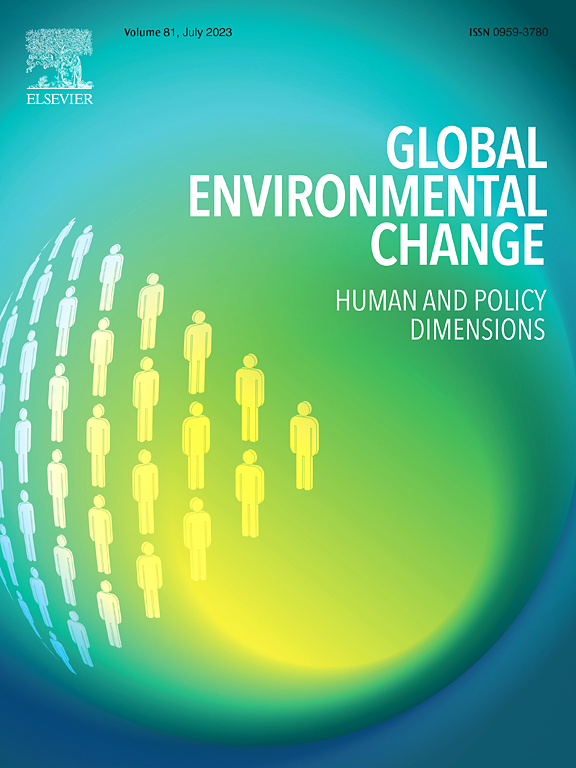欧盟2030年生物多样性战略对欧盟木材生物经济的影响
IF 9.1
1区 环境科学与生态学
Q1 ENVIRONMENTAL SCIENCES
引用次数: 0
摘要
欧盟2030年生物多样性战略(EUBDS)旨在通过保护整个欧盟的大片地区来保护和恢复生物多样性。EUBDS的一个目标是到2030年保护欧盟30%的土地面积,其中10%受到严格保护(包括所有原始森林和原始森林),20%被“更接近自然”的管理。尽管这将对生物多样性产生积极影响,但它可能对欧盟以木材为基础的生物经济产生负面影响。在这项研究中,我们分析了欧盟保护目标的不同解释和分布如何影响未来木质生物质收获水平、木材商品出口以及与SSP2-RCP1.9一致的木材需求下管理区域的空间分布。利用GLOBIOM-Forest模型,我们模拟了代表EUBDS目标的各种解释和地理分布的情景。EUBDS目标对欧盟采伐水平的影响有限,因为到2100年,欧盟的木材采伐仍可增加21%至24%。在对30%的面积进行严格保护的情况下,欧盟的收获水平仍可提高10%。此外,最可能的情况(每个MS内10% / 20%的保护)将导致未来几十年净出口增加,但在2050年后略有下降。然而,如果保护的目的也代表了场地生产力或重建绿色基础设施,那么欧盟的净出口也将在2050年之前下降。随着欧盟圆木采伐量的减少,其他生物群系的采伐量将增加,并且大部分会泄漏到北方地区。本文章由计算机程序翻译,如有差异,请以英文原文为准。
Impact of the EU biodiversity strategy for 2030 on the EU wood-based bioeconomy
The EU Biodiversity Strategy (EUBDS) for 2030 aims to conserve and restore biodiversity by protecting large areas throughout the European Union. A target of the EUBDS is to protect 30 % of the EU’s land area by 2030, with 10 % being strictly protected (including all primary and old growth forests) and 20 % being managed ‘closer to nature’. Even though this will have a positive impact on biodiversity, it may negatively impact the EU’s wood-based bioeconomy. In this study, we analyze how alternative interpretations and distributions of the EU’s protection targets may affect future woody biomass harvest levels, exports of wood commodities, and the spatial distribution of managed areas under wood demands aligned with SSP2-RCP1.9. Using the model GLOBIOM-Forest, we simulate scenarios representing a variety of interpretations and geographic distributions of the EUBDS targets. The EUBDS targets would have a limited impact on EU harvest levels since the EU can still increase its wood harvest between 21 % and 24 % by 2100. With strict protection of 30 % of the area, the EU harvest level can still be increased by 10 %. Moreover, the most likely scenario (10 %/20 % protection within each MS) will result in increased net exports in the coming decades, but a slight decline after 2050. However, if protection is intended to also represent site productivity or to re-establish a green infrastructure, then EU net exports will also decline before 2050. With the decreased EU roundwood harvest, increased harvest will occur in other biomes and mostly leaking into boreal regions.
求助全文
通过发布文献求助,成功后即可免费获取论文全文。
去求助
来源期刊

Global Environmental Change
环境科学-环境科学
CiteScore
18.20
自引率
2.20%
发文量
146
审稿时长
12 months
期刊介绍:
Global Environmental Change is a prestigious international journal that publishes articles of high quality, both theoretically and empirically rigorous. The journal aims to contribute to the understanding of global environmental change from the perspectives of human and policy dimensions. Specifically, it considers global environmental change as the result of processes occurring at the local level, but with wide-ranging impacts on various spatial, temporal, and socio-political scales.
In terms of content, the journal seeks articles with a strong social science component. This includes research that examines the societal drivers and consequences of environmental change, as well as social and policy processes that aim to address these challenges. While the journal covers a broad range of topics, including biodiversity and ecosystem services, climate, coasts, food systems, land use and land cover, oceans, urban areas, and water resources, it also welcomes contributions that investigate the drivers, consequences, and management of other areas affected by environmental change.
Overall, Global Environmental Change encourages research that deepens our understanding of the complex interactions between human activities and the environment, with the goal of informing policy and decision-making.
 求助内容:
求助内容: 应助结果提醒方式:
应助结果提醒方式:


